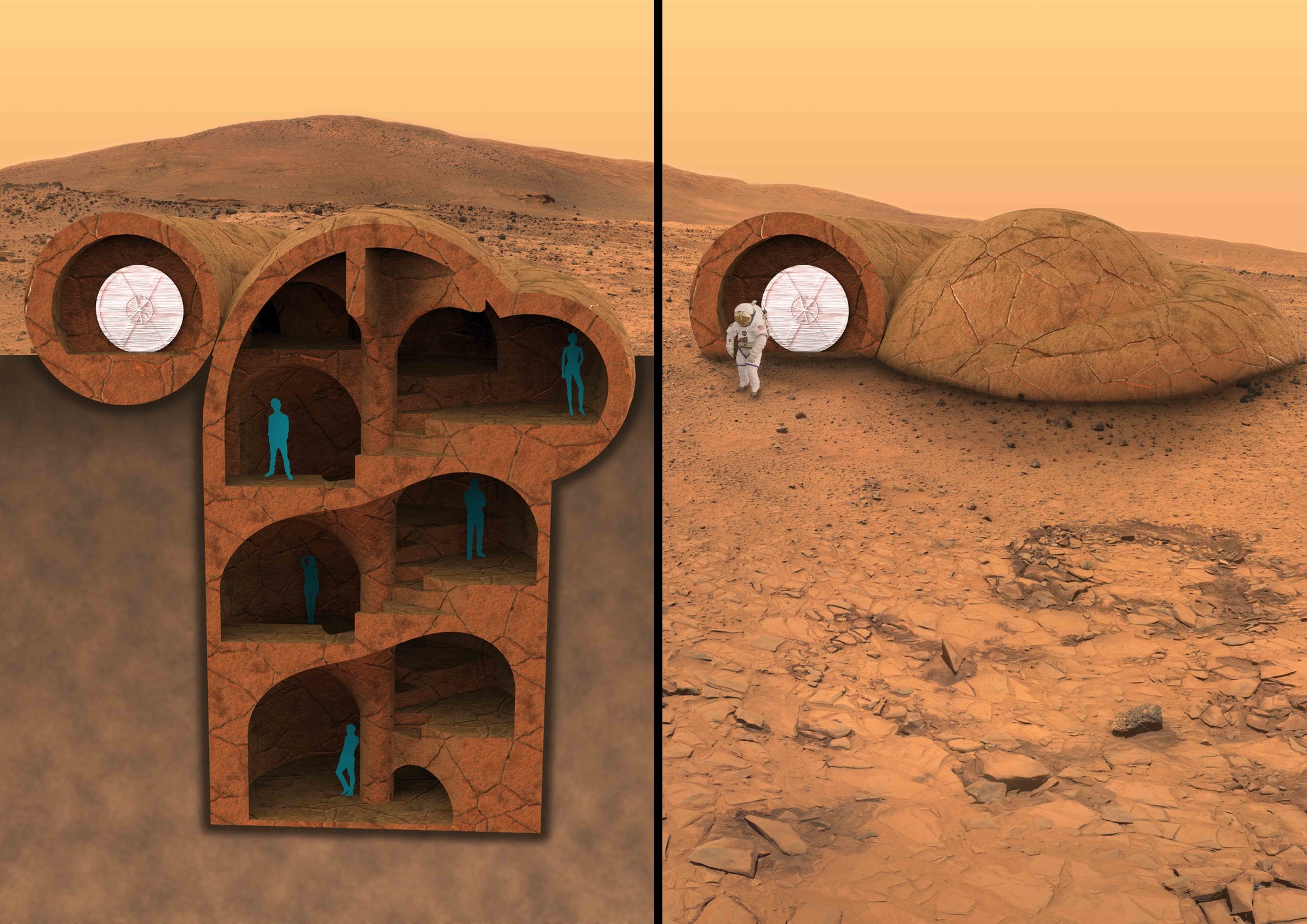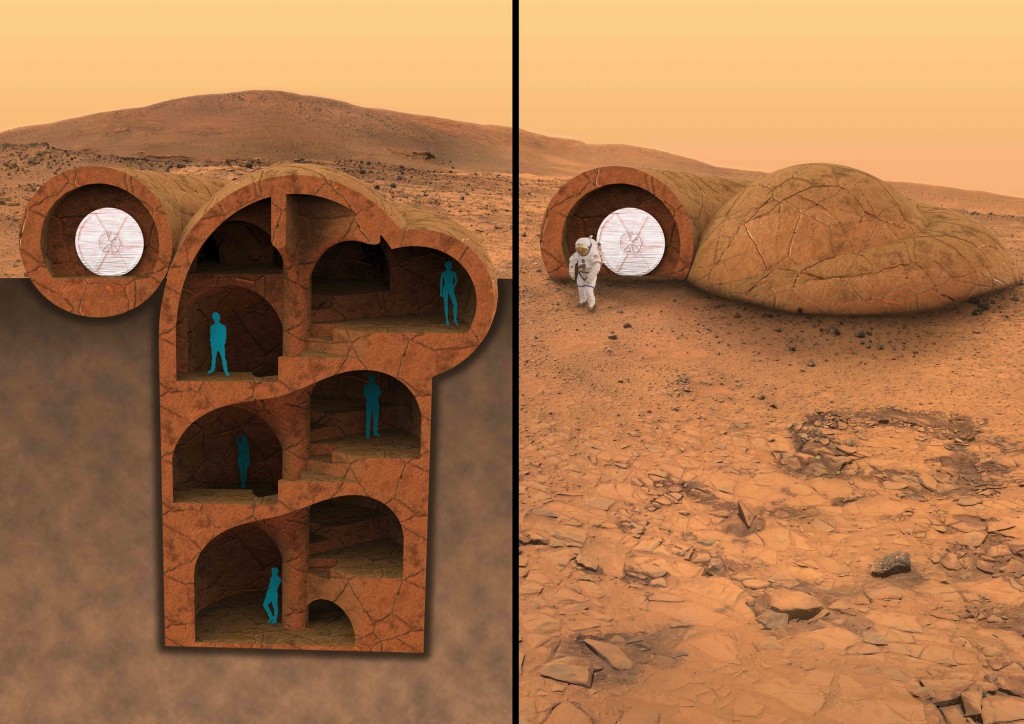RedWorks Offers a Unique Vision for 3D Printed Habitats on Mars

The RedWorks habitat design argues for building down, rather than up for life on Mars. Courtesy of RedWorks.
Latest News
August 28, 2015
Humans have been staring at the red dot that is Mars for a very long time. Only more recently in history have we begun to dream of visiting the planet, starting with unmanned missions. The question isn’t if we’ll visit Mars, but when, and how will our future explorers survive once they reach their destination?
NASA and America Makes recently put forth a challenge to answer that very question. The challenge asked teams to devise habitats for Mars that could be produced using additive manufacturing (AM) using mainly existing elements found in situ. RedWorks has responded to the challenge with a habitat that spirals down into the crust of the planet.
 The RedWorks habitat design argues for building down, rather than up for life on Mars. Courtesy of RedWorks.
The RedWorks habitat design argues for building down, rather than up for life on Mars. Courtesy of RedWorks.From the RedWorks site:
Using Additive Manufacturing (better known as 3D printing) RedWorks is blazing the way forward to the first settlements on Mars. Our team studied simple construction principles of ancient cultures, such as pit houses and pueblos, as well as organic structures found in nature like those found in the shell of the nautilus. The team then adapted those principles to work best with the available resources on the surface of Mars.
Part of the idea of burrowing into the ground rather than just erecting surface habitats is to take advantage of any naturally occurring elements that could positively contribute to the construction. This includes caves, lava tubes, craters and so on. Digging down also gives the habitat an extra layer of natural protection against radiation, which will be a significant issue for anyone living on Mars.
The spiral pattern of the habitat is designed to maximize livable space while retaining functionality. Each level that branches off of the spiral center can be designated for specific use, independent of other levels. Additional protection will be offered by enclosing each section behind an airlock.
While RedWorks doesn’t specify exactly how they intend to use 3D printing as part of the construction, it seems likely that they intend to use the material gathered during excavation to produce a cement-like substance that will either be layered directly in place, or used to produce what would amount to adobe bricks.
Below you’ll find a video that examines some of the difficulties presented by living on Mars.
Source: RedWorks
Subscribe to our FREE magazine, FREE email newsletters or both!
Latest News
About the Author
John NewmanJohn Newman is a Digital Engineering contributor who focuses on 3D printing. Contact him via [email protected] and read his posts on Rapid Ready Technology.
Follow DE





